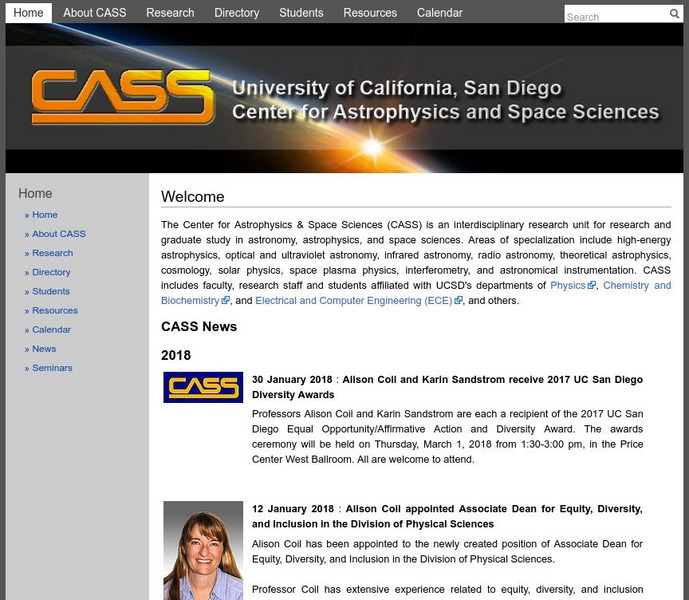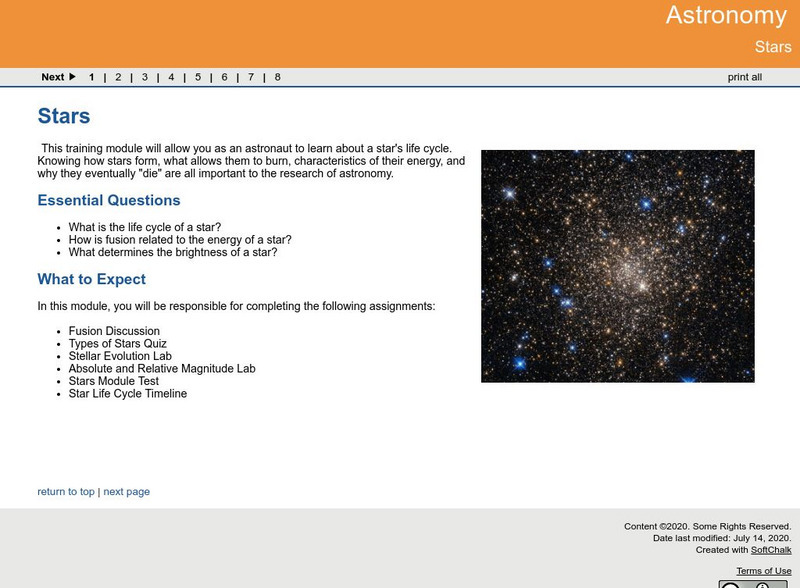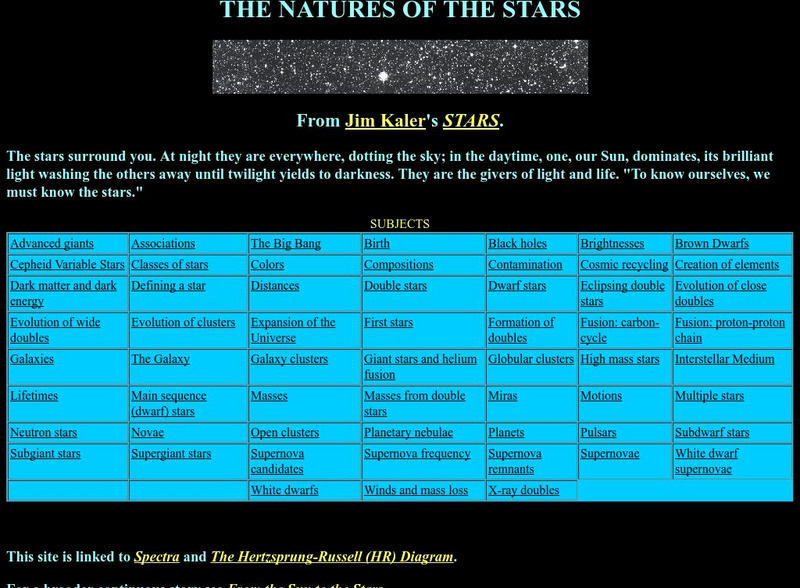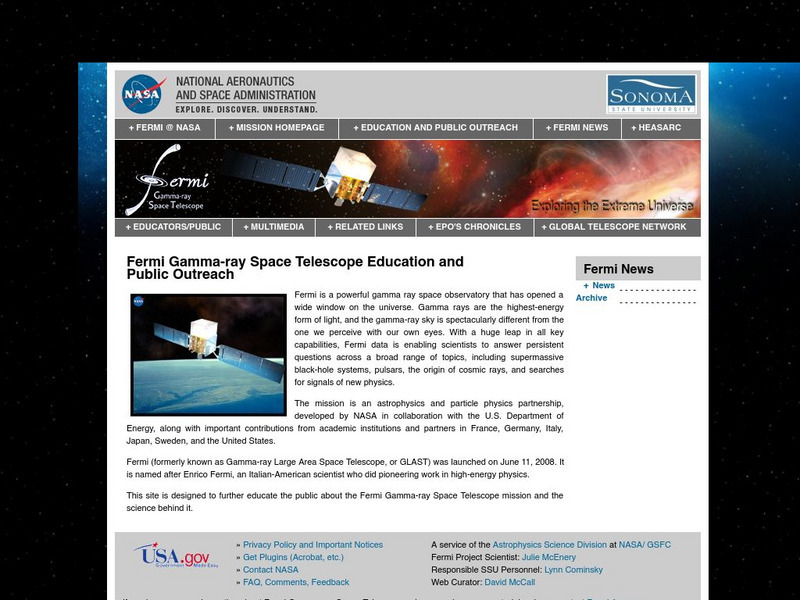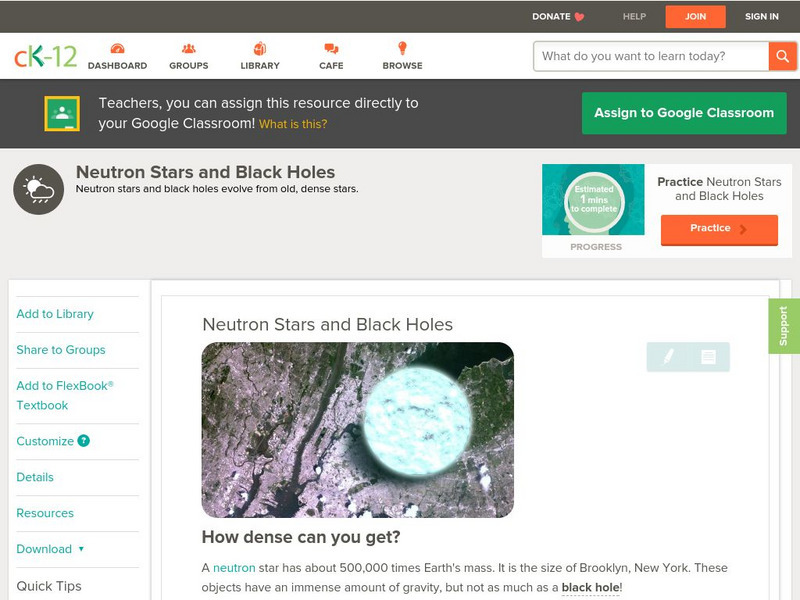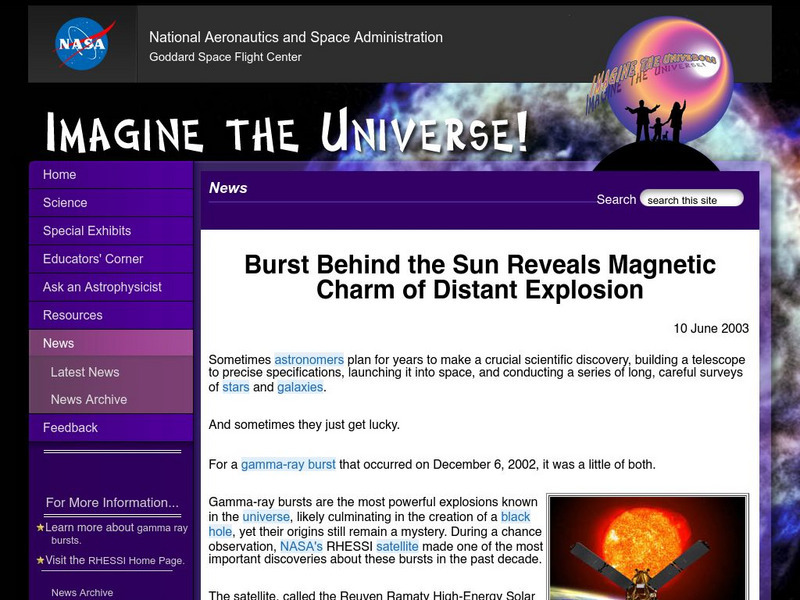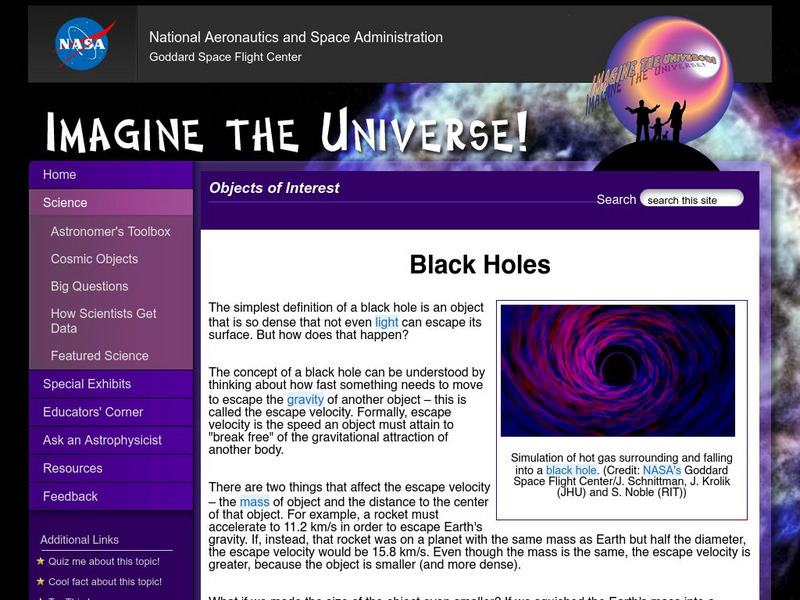Curated OER
Stars
In this space science instructional activity, students use the clues to assist them in solving the crossword puzzle on the stars. They identify various constellations and how each rotates.
University of California
University of California:center for Astrophysics & Space
Supernovae, neutron stars, and pulsars are topics on this page. Extensive section on pulsars that presents information on their discovery, characteristics, evolution, and location.
Other
Jodrell Bank Centre for Astrophysics: A Tutorial on Radio Pulsars
A extensive site that describes the history of the discovery of pulsars along with definitions, characteristics, locations, and distances of pulsars, plus much more.
University of Utah
University of Utah: Aspire: Life Cycle of a Star
Experience this impressive interactive website about the life cycle of a star.
Georgia Department of Education
Ga Virtual Learning: Stars
In this interactive module students will explore the life cycle of stars and how they produce energy.
PBS
Pbs Learning Media: Birth of a Supernova, Type Ii
In this interactive activity from NOVA Online, learn about a type of exploding star a Type II supernova that is so large it has a mass 10 times greater than the mass of our Sun.
PBS
Pbs Learning Media: Pulsars: Little Green Men
The story behind Jocelyn Bell's role in the discovery of pulsars is told in this colorful, comic-book-style resource from A Science Odyssey Web site.
Cornell University
Cornell University: Astronomy: Frequently Asked Questions
Definintions for pulsars, millisecond pulsars, the evolution of pulsars, neutron stars and "Black Widows." Features related links.
University of Illinois
University of Illinois: Stars and Constellations: Neutron Stars and Pulsars
This resource provides a brief description of the relationship between a neutron star and a pulsar. It details the pulsing rate and death of a pulsar.
Sonoma State University
The Gamma Ray Large Area Space Telescope (Glast)
Background information on gamma rays and the sources of gamma rays in the universe. Discusses the purpose of the GLAST space mission and the types of findings which they wish to make. A link to the GLAST movie provides an excellent...
NASA
Nasa: Astronomy Picture of the Day: Crab Nebula and Geminga in Gamma Rays
Explains that pulsars would be the brightest objects in the sky if we could see gamma-rays.
CK-12 Foundation
Ck 12: Earth Science: Neutron Stars and Black Holes
[Free Registration/Login may be required to access all resource tools.] Explains the characteristics of neutron stars and black holes.
NASA
Nasa: Imagine the Universe: "Burst Behind the Sun"
Site provides the article, "Burst Behind the Sun Reveals Magnetic Charm of Distant Explosion," that details on a gamma-ray burst that occurred on December 6, 2002. Provides graphics and links to learn more about gamma-ray bursts.
NASA
Nasa: Imagine the Universe: Black Holes
Learn what black holes are and the myths that surround them.
NASA
Nasa: Heasarc: What Are Pulsars?
A detailed definition of a pulsar with an explanation of the relationship of pulsars to X-ray astronomy and links to related resources.
NASA
Nasa: Imagine the Universe: Pulsars
Resource explores what a pulsar is, as well as what is currently known about this phenomenon. Content includes a focus on x-ray observations of pulsars, and gamma-ray pulsars.
Other
American Institute Physics: Quark Stars
Collapsed stars, between white dwarfs and black holes, can be studied as quark-gluon masses, or quark-hyperon groups. Extreme pressures lead to extreme states.
NASA
Nasa: Imagine the Universe: X Ray Binary Stars
Site provides a brief introduction to binary stars. Additional resources for students and teachers on this topic are offered as well as related topics.
Curated OER
Science Kids: Science Images: Neutron Star
A Hubble Space Telescope photo of a rapidly spinning neutron star, also known as a pulsar.



